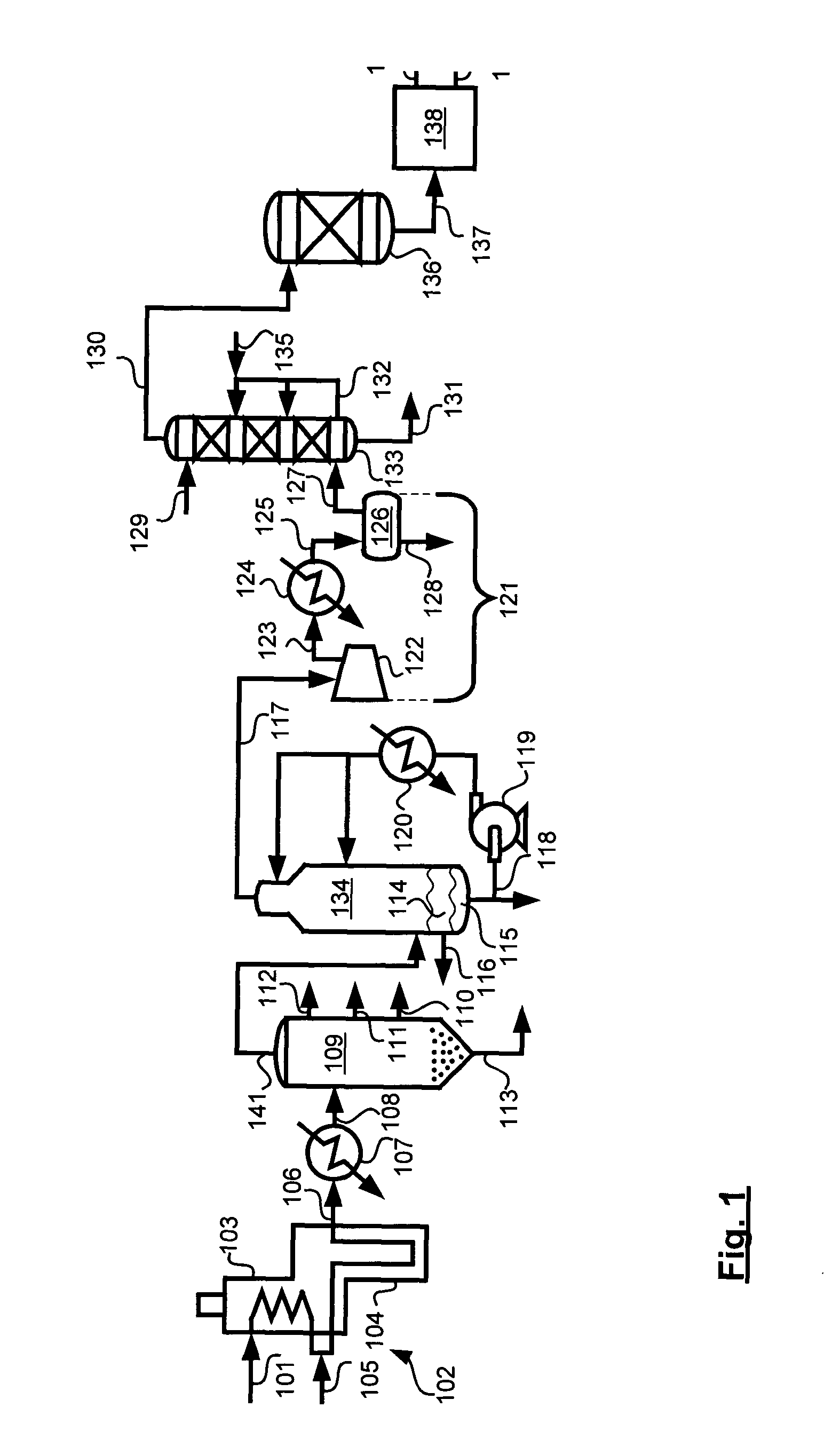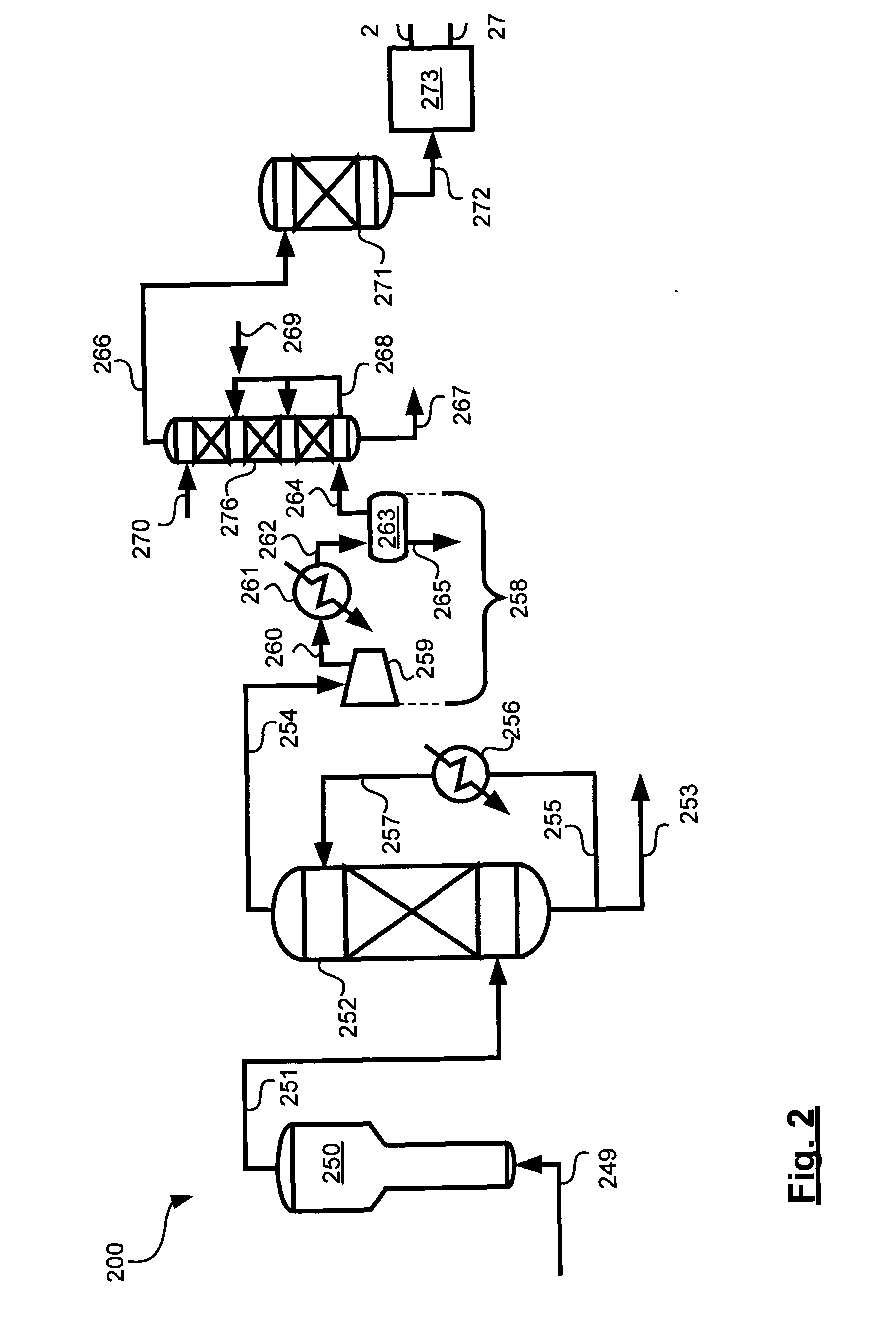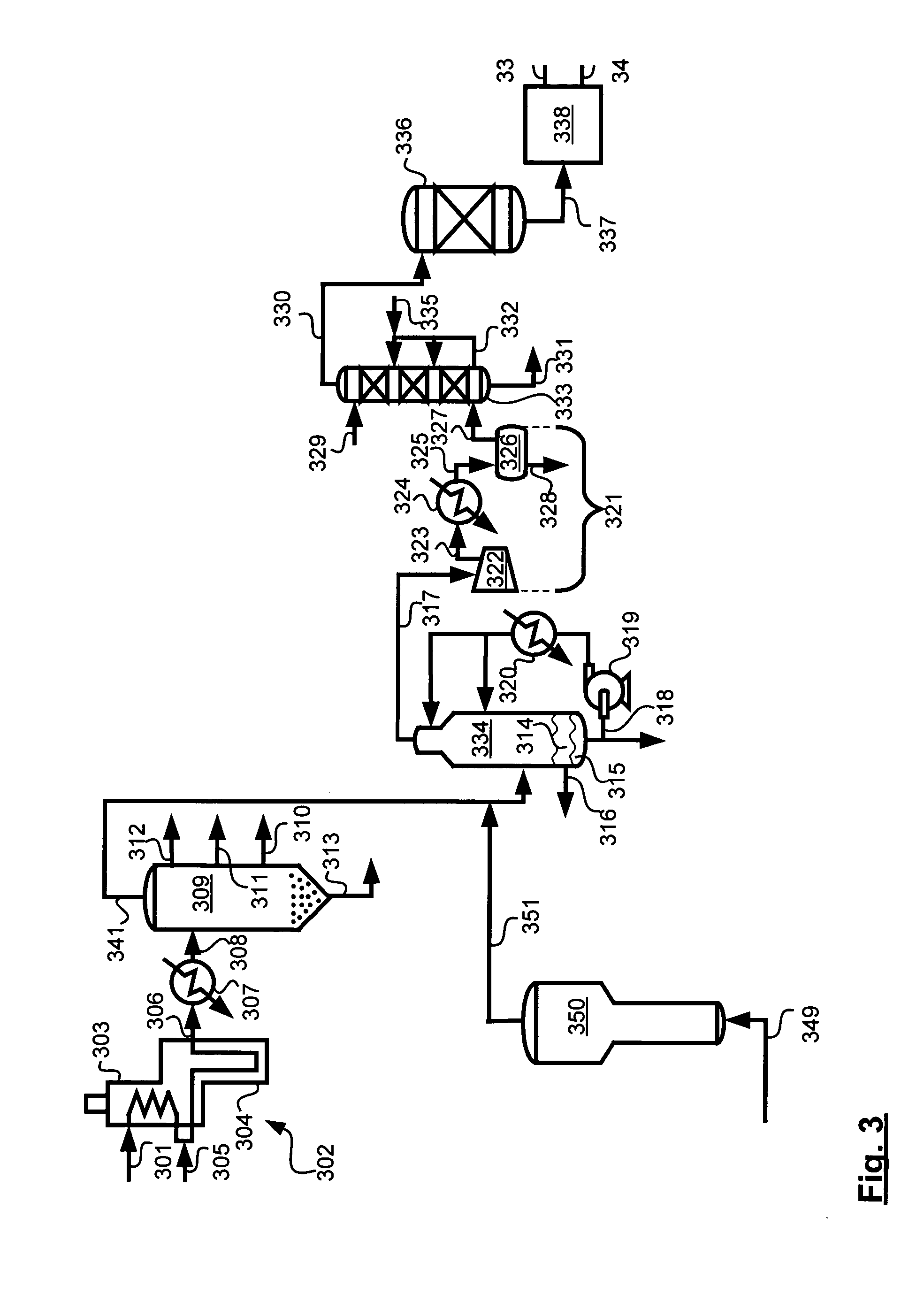Integrating a methanol to olefin reaction system with a steam cracking system
a technology of ethylene and olefin, which is applied in the direction of thermal non-catalytic cracking, organic chemistry, hydrocarbon preparation catalysts, etc., can solve the problems of increasing the load on existing process equipment, low value or otherwise undesirable byproducts, and hydrocarbon feedstocks, so as to achieve significant reduction of equipment and the amount of pollutants produced per pound of ethylene and propylene produced
- Summary
- Abstract
- Description
- Claims
- Application Information
AI Technical Summary
Benefits of technology
Problems solved by technology
Method used
Image
Examples
Embodiment Construction
[0021] Introduction
[0022] The present invention provides an integrated reaction system for producing ethylene and propylene. Specifically, the integrated system according to the present invention combines an effluent from a steam cracking system with an effluent from an oxygenate to olefin (OTO) reaction system, preferably a methanol to olefin (MTO) reaction system. By combining effluent streams from a steam cracking system and an OTO reaction system, equipment count in the integrated system can be advantageously minimized. Also, compressor efficiency per pound of ethylene and propylene produced can be advantageously increased over compressor systems in conventional steam cracking systems. Additionally, the amount of pollutants produced per pound of ethylene and propylene produced can be significantly lower than in a conventional steam cracking system.
[0023] Steam Cracking Systems
[0024] The bulk of ethylene consumed in the production of various plastics and petrochemicals such as...
PUM
| Property | Measurement | Unit |
|---|---|---|
| boiling point | aaaaa | aaaaa |
| temperature | aaaaa | aaaaa |
| dew point | aaaaa | aaaaa |
Abstract
Description
Claims
Application Information
 Login to View More
Login to View More - R&D
- Intellectual Property
- Life Sciences
- Materials
- Tech Scout
- Unparalleled Data Quality
- Higher Quality Content
- 60% Fewer Hallucinations
Browse by: Latest US Patents, China's latest patents, Technical Efficacy Thesaurus, Application Domain, Technology Topic, Popular Technical Reports.
© 2025 PatSnap. All rights reserved.Legal|Privacy policy|Modern Slavery Act Transparency Statement|Sitemap|About US| Contact US: help@patsnap.com



